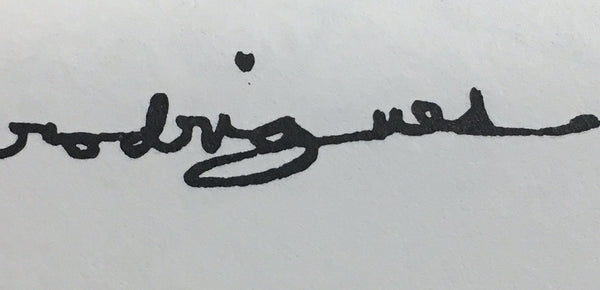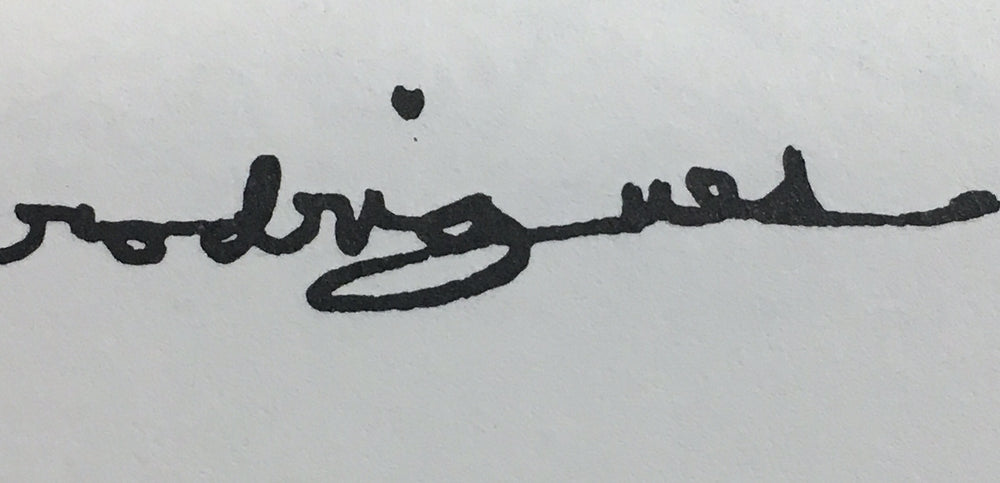Sweet summer! Calendar-wise, it’s not quite here, but musically it’s already available, via new recordings of two seasonal favorites. Also on tap: a masterpiece for all seasons, freshened through the efforts of eight young performers—because no rule says you have to limit summer listening to the musical equivalent of a citrus-infused IPA.
Felix Mendelssohn (1809–47) was just seventeen when he created his concert overture, A Midsummer Night’s Dream. It’s a tone poem, not a prelude—you don’t need to follow with Shakespeare’s play. The music gives us everything: Oberon, Titania, and their fairies; Duke Theseus; two young couples in love; Bottom and his “Mechanicals.” Shot through every measure is the joyful sense of magic that children feel when they’ve stayed outside too long, lost in play with their friends, the moon rising and cool breezes blowing in the trees. Listen:
Seventeen years later, after Felix had written incidental music for the whole play, his sister Fanny wrote
Yesterday we were remembering how A Midsummer Night’s Dream was always present in our home; how at various ages we had read all the different roles, from Peaseblossom to Hermia and Helena. . . . We have indeed completely grown together with [it,] and Felix in particular has made it very much his own.
Now conductor Iván Fischer has recaptured Mendelssohn’s Midsummer magic, making it his own and ours too. Introducing his new recording of the (nearly) complete music (Channel Classics CCS SA 37418), he shares his secret:
No doubt fairies exist. Mendelssohn spoke their language well. . . .
Humans like this music. It entertains them. They are allowed to listen to this CD, too. However, we made this recording for fairies. They listen differently.
Okay, that sounds altogether too cute. But Mendelssohn did speak their language well, and Fischer amply demonstrates his own insight. Here are bits of the incidental music, beginning with the Intermezzo, in which Hermia, shaken after a nightmare, arises in search of her lover Lysander:
And here is the Notturno, meant to accompany the couples’ slumber before Puck doses them with his love potion:
Finally, a taste of the Funeral March for Thisbe and Pyramus in the Mechanics’ “very tragical mirth,” of which Fanny wrote, “It is just too much of an impudence to lay it before the public, as when Felix starts to improvise at the piano and cannot be persuaded to play properly.” (She did not share her brother’s sense of humor.)
Recently I auditioned a slightly more complete Midsummer, from Thomas Dausgaard and the Swedish Chamber Orchestra (BIS-2166) with the women of the Swedish Radio Choir. From a technical standpoint, it’s faultless. If anything, Dausgaard’s smaller forces play with tighter ensemble, and his cool-sounding Swedish females make their brief contribution with more sangfroid—and perhaps better line and balance—than Fischer’s ladies:
Even so, I prefer Fischer. Why? Must be the fairies.
Onward to another summer favorite: Vivaldi’s Four Seasons (in Italian, Le Quattro Stagioni). We are never at a loss for new recordings; staunch traditionalists can choose from at least a half dozen. Here, for example, is the opening of “Spring” (“La primavera”) from violinist Tasmin Little and the BBC SO (Chandos CHSA 5175), using modern instruments and a chamber orchestra. You’ll hear an approach that many generations of Baroque enthusiasts knew and loved:
On the other hand, there’s little truly staunch or traditionalist about Rachel Podger’s recent offering (Channel Classics CC SA 40318). She does it one-on-a-part, on old instruments, with her colleagues in Brecon Baroque, all of whom are bona fide HIPsters. Let’s hear some of “La primavera” in their hands:
I found elements in each performance that I liked. With larger forces, Little produced a more effective solo-tutti contrast and easily maintained good balance between bass and treble instruments. On the other hand, Podger’s smaller group emphasized the contributions of each musician and thereby sometimes produced busier, more exciting textures. One never got the feeling that Little’s BBC personnel had to make as much of an effort; maybe you like that sense of effortless command, or maybe you’d prefer to feel the individual energies in the band.
Now, to get pickier: much as I respect Podger and enjoy what she does, I don’t care for the way Brecon Baroque treats the last, longer note in the oft-repeated first phrase as an opportunity for a hairpin crescendo-decrescendo (the gentle swell that Leopold Mozart and others encouraged in their treatises). Here, it doesn’t fit the affect well. And I don’t like the way the continuo instruments (theorbo, cello, bass violone, and harpsichord) compete with the upper strings beginning at 1’06”: that is the section depicting “murmuring streams softly caressed by the breezes,” so it won’t do for the support staff to strum and saw away, oblivious to those who are actually attempting to murmur and caress!
You may well make a choice based on broader concerns. There’s a lot to be said for the spirit of a project, whether it’s Mendelssohn or Vivaldi.
Speaking of spirit, get a load of composer/saxophonist Peter Navarro-Alonso’s take on “Summer,” below. (It helps to remember that Vivaldi’s poem for this season emphasized relentless heat, thunderstorms, and buzzing gnats.)
You will have heard that Navarro-Alonso only begins with Vivaldi. Eventually he takes off on his own path, enthusiastically assisted by Alpha, his trio with recorder player Bolette Roed and percussionist David Hildebrandt. One pleasant thing about this music is that N-A doesn’t give a fig about demonstrating theoretical complexity or a unified, rational “language.” His generation of creatives in post-classical music are so over the over-emphasis on theory that had begun with Schoenberg and continued with Messiaen and his pupils.
Here’s a bit of N-A’s “La primavera,” in which he begins with his own material (influenced by Steve Reich, perhaps?) and only gets around to Vivaldi’s bird-calls later:
Incidentally, the string-orchestra contributions from Ekkozone, the other assisting ensemble, sound raw only because they’re amplified. The recording itself is nicely balanced, its percussion and woodwind contributions well caught, making a pleasant experience for audiophiles—especially those who find transient responses the best part of the meal. The album is called (of course) Le Quattro Stagioni, it’s from Da Capo (8.226591), and you can enjoy it even at the beach, although you may get sand in your $800 headphones.
Finally: Schubert, specifically his Octet in F, D803. You might well ask, what’s summery about that? I once read a story—I think—about the teenage Franz Peter Schubert and a carefree summer walking trip he took. When I tried to fact-check it last week, I soon realized that Franz P. was not really the sort of kid who kept a backpack handy. His summer excursions as a 20-year-old usually consisted of touring the provinces with baritone Michael Vogl, an older man who employed him as accompanist and promoted his songs. When not concertizing, Schubert gave piano lessons to Count Esterházy’s daughters at their summer home; read more here. (Schubert did occasionally go on working vacations with other friends, so feel free to imagine him ending some of those days at an open-air Heuriger, wine freely flowing, music as well.)
In the end, though, nearly all of Schubert’s “holidays” revolved around making and performing music. Let’s raise a glass to him just as he was, a dedicated indoorsman. All he really required of summer (or any other season) was a quiet room, a pen, and some music paper.
By the summer of 1824, the composer had finished work on the Octet and the “Rosamunda” String Quartet, D804. Like the “Trout” Quintet, the Octet can be classified as light music: it’s in six movements, four of them lyrical or dance-like; it was written in frank imitation of Beethoven’s Septet and designed for performance by skilled amateurs. All that lands it in serenade or divertimento territory instead of implying a “serious” genre like symphony or string quartet. Performers and marketers have regarded it similarly: my old Philips LP with the ASMF Chamber Ensemble shows Iona Brown and her colleagues lounging comfortably amongst leafy bowers somewhere in London (photo by Mike Evans). My beloved Hyperion CD with the Gaudier Ensemble, engineered nearly twenty years ago by Tony Faulkner, also shows a summer landscape (Christian Heinrich Achenbach’s A View of Lübeck), sheep grazing, farmers taking their ease on the banks of the Trave.
Now a provocative new recording of the Octet challenges all such convenient associations. Violinist Isabelle Faust has gathered some like-minded HIP colleagues to deliver a carefully curated new interpretation, emphasizing every nuance, each odd harmonic change or searching bit of counterpoint. They have not given us a “new” Octet, but they certainly make a case for its being serious music. A few overly precious moments aside, the music reaches our ears with new weight and feeling. Listen to the way they handle the stormy first section of the final movement:
For comparison’s sake, here’s that same patch from the Gaudier Ensemble, whose more restrained, Haydnesque reading I have enjoyed for many years:
And now just a couple of variations from the Andante, a theme-and-variations tour de force:
I don’t know yet whether I will live with Faust and Friends as happily for the next twenty years as I did with the Gaudiers for the last twenty, but I’m awfully glad to have this Octet with me right now. All things considered, its serious tone seems perfect for summer 2018.
Enjoy the season, and the music.
















